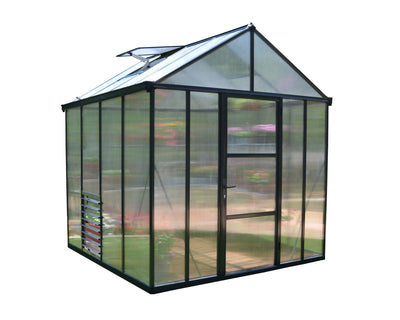How to Compost in Small Urban Gardens – 10 tips

10 tips for Composting in Urban Gardens:
1. It all starts with the bin. Most of us don’t have space for a large compost pile. Not to worry there are plenty of compost bins to suit small urban gardens. They are easy to use and stop food waste from going into landfill. You may need 1 or two bins depending on the size of your household and the amount of food waste generate. We have a variety of compost bins for you to choose from – compost tumblers, small bucket-style compost bins to larger compost bins with lids, or even bokashi compost systems.
- Set up for success. If you are starting fresh with an empty compost bin it’s a good idea to put a layer of coarse material down first. If you are using a standard compost bin, put a mix of thin but woody branches and torn-up cardboard in the bottom of the bin. This layer will improve airflow at the bottom of the bin. If you have a tumble compost bin, this will work too (the coarse layer will just mix in when it rotates).
- Choose the right spot for your compost bin. The right spot is slightly away from the house (but not too far) on a level site in part shade. This will ensure the compost bin doesn’t dry out. A compost bin in a shady site will work but decomposition may be slower. In shade, you may also have to add a bit more cardboard and dried leaves to help dry things out. In full sun composting will be faster but you may need to water it occasionally to keep it moist.
- Balance is key. Aim a for 3 to 1 ratio of green to brown matter to ensure your compost doesn’t get too wet or stinky. Green matter is usually wet and includes food waste, eggshells, coffee grounds, tea bags, and grass clipping. Brown matter is typically dry and includes cardboard, paper towels and dry leaves. Just like you, the microbes in your compost bin like variety in their diet.
- Slice and Dice. Yes, it’s a pain, but chopping up food scraps, smashing down eggshells and tearing up cardboard before you add them to the compost bin facilitates the decomposition process and means you will have fine compost a lot quicker.

- Make it convenient. The worst thing about composting is a smelly messy bin in your kitchen. The best way to avoid this is to empty your kitchen caddy every other day. Use a small compostable bin liner if you tend to take a bit longer to get out to the compost bin. This will make the transfer to the outside compost bin easy mess-free.
- Think outside the box. All types of organic matter can be added to your compost. Ash, sawdust, shredded paper, vacuum dust, wooden chopsticks, cotton wool, pet fur can all be added to your compost. Please note: you should NOT add these items to standard compost bins: meat, dairy, oils, fish scraps, diseased plants, weeds that have gone to seed, charcoal ash and dog/cat faeces.
- Layer like a cake. If you tend to have mainly kitchen/food waste to add to your bin. Try keeping a stash of torn-up cardboard or dried leaves near the outside bin that can be interspersed with layers of kitchen scraps. This will stop the compost from becoming too wet and stinky and create the right environment for decomposition.
- Tumble or turn. This helps add moisture and oxygen to your compost and speed up decomposition. This is made easy with tumble-style compost bins. For standard large lidded compost bins try our aerator spiral.
- Consider composting indoors. Try Bokashi. A bokashi composting system is a good option if you live in an apartment or have a very small garden. The best bit is you can include meat, fish and dairy products in your bin. You’ll need two bins and some accelerator to get a system going.

Following these guidelines will ensure you have a functional, vermin-free compost bin that produces rich and fertile compost matter for your garden.
You can tell if your compost is ready to use if it is brown, crumbly and smells earthy. If it is still warm, there are obvious pieces of food waste and mushy lumps you should wait a bit longer. Happy composting!
If you're ready to get started, check out our range of compost bins
















